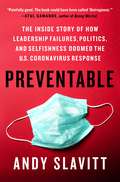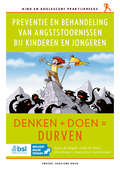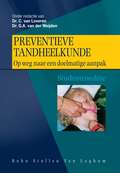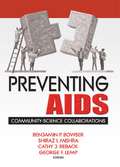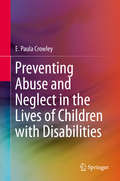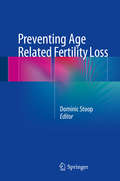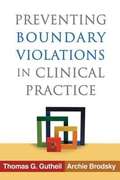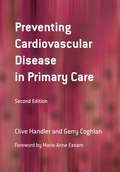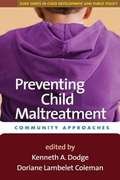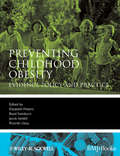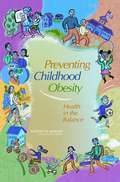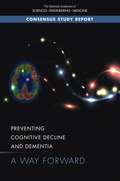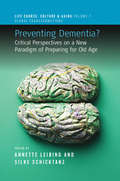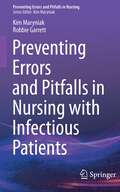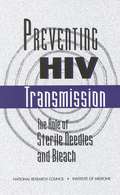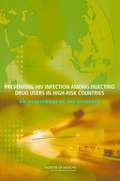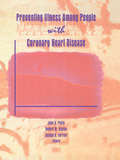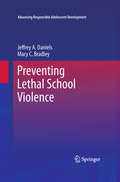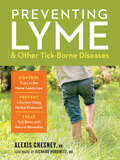- Table View
- List View
Preventable: The Inside Story of How Leadership Failures, Politics, and Selfishness Doomed the U.S. Coronavirus Response
by Andy Slavitt* NATIONAL BESTSELLER *“Painfully good. The book could have been called, ‘Outrageous.’ The story Andy Slavitt tells is not just about Trump’s monumental failures but also about the deeper ones that started long before, with our health system, our politics, and more.” --Atul Gawande, author of Being Mortal The definitive, behind-the-scenes look at the U.S. Coronavirus crisis from one of themost recognizable and influential voices in healthcareFrom former Biden Senior Advisor Andy Slavitt, Preventable is the definitive inside account of the United States' failed response to the Coronavirus pandemic. Slavitt chronicles what he saw and how much could have been prevented -- an unflinching investigation of the cultural, political, and economic drivers that led to unnecessary loss of life.With unparalleled access to the key players throughout the government on both sides of the aisle, the principal public figures, as well as the people working on the frontline involved in fighting the virus, Slavitt brings you into the room as fateful decisions are made and focuses on the people at the center of the political system, health care system, patients, and caregivers. The story that emerges is one of a country in which -- despite the heroics of many -- bad leadership, political and cultural fractures, and an unwillingness to sustain sacrifice light a fuse that is difficult to extinguish. Written in the tradition of The Big Short, Preventable continues Andy Slavitt’s important work of addressing the uncomfortable realities that brought America to this place. And, he puts forth the solutions that will prevent us from being here again, ensuring a better, stronger country for everyone.
Preventie door paramedici: Gezondheidsbevordering en zelfmanagement
by Barbara SassenDit boek toont hoe patiënten, ondersteund door professionals, zelf hun gezondheid kunnen verbeteren, door hun leefstijl te veranderen, hun gezondheid te monitoren en hun zelfmanagement te optimaliseren. Het boek is geschreven voor studenten fysiotherapie, diëtetiek, mondhygiëne, logopedie, farmakunde, cesartherapie, oefentherapie, sportkunde en optometrie, kortom voor alle toekomstige professionals in de paramedische zorg.In Preventie door paramedici leest u hoe succesvolle leefstijlverandering en effectief zelfmanagement leiden tot verbeterde therapietrouw, patiëntparticipatie en shared decision making. Dat vraagt om een gemotiveerde patiënt én om een gemotiveerde en betrokken professional. De professional is daarbij verantwoordelijk voor de ondersteuning. Het boek bespreekt gezondheid op micro-, meso- en macroniveau en geeft handen en voeten aan preventie, gezondheidsbevordering en -voorlichting voor de verschillende paramedische beroepen. Daarvoor is gebruikgemaakt van recente gegevens uit wetenschappelijk onderzoek en ervaringen uit de beroepspraktijk. Het boek bevat twee trainingen ‘bevorderen van het zelfmanagement van de patiënt’ en ‘de professional als gezondheidscoach’.Dr. Barbara Sassen is verbonden aan de University of Applied Science, faculteit Gezondheidszorg, Hogeschool Utrecht.
Preventie en behandeling van angststoornissen bij kinderen en jongeren: Denken + Doen = Durven (Kind en adolescent praktijkreeks)
by Susan M. Bögels Anke M. Klein Ellin Simon Bonny F.J.A. van SteenselDit boek is een praktische gids voor het voorkomen en behandelen van angststoornissen bij kinderen en jongeren van 8 t/m 18 jaar. Het beschrijft hoe deze stoornissen kunnen ontstaan, waarom ze niet spontaan overgaan, het belang van vroegsignalering en preventie, en hoe ze door middel van cognitieve gedragstherapie behandeld kunnen worden. Het boek is geschreven voor psychologen, orthopedagogen, psychiaters en andere hulpverleners. In Preventie en behandeling van angststoornissen bij kinderen en adolescenten wordt de behandelmethode Denken + Doen = Durven beschreven. Dit is een bewezen (kosten)effectieve CGT-interventie. In het boek wordt uitvoerig stilgestaan bij verschillende onderdelen waarmee de interventie ‘op maat’ kan worden gemaakt: psycho-educatie, exposure, cognitieve technieken, coping vaardigheden, de rol van ouders, etc. Daarnaast worden verschillende protocollen beschreven: een preventief groepsprotocol voor 8 t/m 12 jaar en voor 12 t/m 18 jaar, en een individueel en groepsprotocol, en een modulaire interventie voor de curatieve (jeugd-ggz) setting. Kinderen en jongeren gebruiken het bijbehorende werkboek Denken + Doen = Durven. Ook is er online aanvullend materiaal beschikbaar én een online werkboek voor ouders. In deze volledig herziene tweede editie zijn de nieuwste ontwikkelingen en wetenschappelijke inzichten verwerkt. Nieuw zijn de preventieve vorm en de modulaire, flexibele vorm, waarbij hulpverlener en kind zelf de onderdelen/technieken en het aantal bijeenkomsten kiezen.
Preventie en gezondheidsbevordering door verpleegkundigen: Zelfmanagement en leefstijlcoaching
by Barbara SassenDit boek geeft (aankomend) verpleegkundigen handvatten om preventie en gezondheidsbevordering te integreren in de dagelijkse praktijk. Het beschrijft hoe je zelfmanagement- en leefstijlcoaching evidence-based ‘handen en voeten’ geeft. Daarbij zijn patiënt- of persoongecentreerde zorg en patiëntparticipatie belangrijke uitgangspunten. Nieuwe elementen in deze negende, herziene druk zijn programmatisch studeren en programmatisch toetsen. Door het hele boek staan opdrachten die direct aansluiten bij de voorafgaande tekstdelen. Deze opdrachten hangen met elkaar samen en sluiten aan bij de beroepsinhoud en competenties. Het vertrekpunt hierbij is dat preventie staat of valt bij een gemotiveerde patiënt én een gemotiveerde verpleegkundige professional.Succesvolle preventie verbetert zowel de gezondheidsstatus van de patiënt, de patiënttevredenheid als diens kwaliteit van leven. Succesvolle gezondheidsbevordering en zelfmanagement- en leefstijlsupport door verpleegkundige zorgprofessionals verbetert de therapietrouw, patiëntparticipatie, en shared-decision making. En natuurlijk heeft dit patiëntgecentreerde zorgparadigma voordelen voor zorgprofessionals zelf, voor het gezondheidszorgsysteem en de samenleving als geheel.Preventie en gezondheidsbevordering door verpleegkundigen - Zelfmanagement en leefstijlcoaching is geschreven voor studenten in de bachelor- en masteropleidingen verpleegkunde en voor verpleegkundige professionals.Dr. Barbara Sassen PhD RN is als hoofddocent verbonden aan de University of Applied Sciences, Utrecht.Deze negende druk sluit aan bij het boek Verplegen vanuit ambitie, ISBN 9789036826037.
Preventieve mondzorg
by Catherine Volgenant Katarina Jerković-Ćosić Isabelle Laleman Monique van der VeenDit leerboek bundelt de belangrijkste kennis over preventie van de meest voorkomende mondziekten en geeft handvatten voor de dagelijkse praktijk. Het boek is primair geschreven voor de praktiserende en aankomende mondzorgverleners in Nederland en Vlaanderen. De uitgave is tevens geschikt voor alle andere zorg- en welzijnsprofessionals. Preventie heeft in toenemende mate een onmisbare plaats in de gezondheidszorg en de mondzorg. Ondanks inspanningen op verschillende niveaus, komen mondziekten zeer frequent voor, met grote gevolgen voor de algemene gezondheid en kwaliteit van leven. Dit boek presenteert de actuele kennis over de preventieve aanpak van de meest voorkomende mondziekten: cariës, parodontale aandoeningen en tanderosie. Preventieve mondzorg is opgebouwd uit twaalf hoofdstukken, die variëren van epidemiologie, etiologie en detectie tot individuele en collectieve preventie. Er is veel aandacht voor het ontstaansmechanismevan mondziekten, het tijdig opsporen ervan met relevante meetinstrumenten en systemen en het preventief ingrijpen. Preventieve interventies en hulpmiddelen, binnen maar ook buiten de mondzorgpraktijk, zijn uitgebreid beschreven en worden ondersteund met concrete aanbevelingen en voorbeelden uit de praktijk. Het boek presenteert relevante kennis over preventie op een toegankelijke manier en is enig in zijn soort. Het is daarom onmisbaar voor alle (mond)zorgverleners in de eerstelijnszorg en publieke gezondheid. Vooraanstaande clinici en wetenschappers werkten mee aan deze volledig vernieuwde uitgave onder het redactieteam vanuit de kennisgebieden epidemiologie, cariologie, parodontologie en publieke gezondheid.
Preventieve tandheelkunde: Op weg naar een doelmatige aanpak
by A.J. van Winkelhoff B. Houwink G.A. van der Weijden C. Penning St. Conserverende Tandheelkunde Stichting Gebitspathologie H. Schut W.H. Palenstein Helderman Klaus G. Konig F.W.A. Frankemolen K.L. WeerheijmDit boek geeft naast achtergronden en basisadviezen, aanknopingspunten om een individueel preventieprogramma op te stellen voor iedere patiënt aan wie uitvoering van het basisadvies zelfs na optimalisering onvoldoende bescherming biedt.
Preventing AIDS: Community-Science Collaborations
by R Dennis Shelby Benjamin Bowser Shiraz Mishra Cathy RebackLearn how to create professional collaboration between HIV/AIDS researchers and community organizations for the benefit of all! This book is designed to help frontline prevention organizations answer two questions that are of utmost importance. First, how effective are their services; and second, can their work be improved? The absence of rigorous evaluation is a barrier to stable funding for community organizations, and the strategies in Preventing AIDS: Community-Science Collaborations can help overcome that barrier. The book is a guide to successful cooperative efforts between researchers and community-based organizations. The information it presents will help community-based programs acquire detailed, timely information on program effectiveness and outcomes. It also provides researchers with methods for accessing hard-to-reach or hidden HIV high-risk groups. Handy tables and figures make important data easy to access and understand. In Preventing AIDS: Community-Science Collaborations, you&’ll learn about the difficult but critically important collaboration between community organizations who do frontline prevention work and university scientists who evaluate the effectiveness of that work. The book describes the community-researcher equal partner collaboration (CREPC) model for community-based collaborative research. In addition, it examines six unique efforts to prevent the spread of AIDS among high-risk populations, such as prostitutes, injection drug users, impoverished pregnant women, migrant workers, transgendered persons, and prison inmates. The case studies in Preventing AIDS: Community-Science Collaborations describe the frustrations of outreach workers and counselors who suddenly must help design a survey they fear will be intrusive, and the parallel problems faced by scientists who are told that their traditional measures mean little to outreach workers. Preventing AIDS: Community-Science Collaborations presents funders&’ perspectives on collaborative AIDS research and examines the collaborative and funding aspects of: the CAL-PEP prevention programs for drug injectors and sex workers efforts to promote HIV prevention for migrant farm workers and evaluate those efforts&’ effectiveness the ongoing collaboration between The Center for AIDS Prevention Studies (University of California, San Francisco), Centerforce (a statewide nonprofit agency providing services and advocacy to prisoners and their families), and San Quentin State Prison the effort of the Los Angeles County HIV Epidemiology Program and three community-based organizations, which collaborate to provide culturally appropriate outreach and HIV education/prevention services to transgendered individuals of various ethnic origins San Francisco&’s PHREDA project and the way its creators collaborated to better understand and serve high-risk women The U-Find-Out (UFO) Study, funded by the Universitywide AIDS Research Program of the State of California
Preventing Abuse and Neglect in the Lives of Children with Disabilities
by E. Paula CrowleyThis book addresses the development of our understanding of the abuse and neglect in the lives of children with disabilities. Disabilities in childhood uniquely dispose children for their abuse and neglect. Additionally, abuse and neglect dispose children for disabilities. The care and education of children with disabilities requires unique knowledge and skills and so does the consideration of their abuse and neglect. This book is based on data generated from an analysis of cases involving the abuse and neglect of children with disabilities as well as on an analysis of the data based literature in this area. Readers are provided with analysis and reflection exercises throughout the text so that they may analyze and reflect on their own awareness of the abuse and neglect of children with disabilities. Each chapter also contains a set of implications for research and practice. The final chapter focuses directly on prevention. Caregivers and professionals across disciplines will develop a new understanding of their roles in universal, secondary, and tertiary level prevention that is targeted, focused, data-based, and designed to prevent the abuse and neglect of children with disabilities in the first place.
Preventing Age Related Fertility Loss
by Dominic Stoop This unique book provides experts advice on all the different aspects related to fertility preservation for age related infertility. Although, there is a lot of information available on the Internet and in books about fertility preservation for cancer treatment, little information is available for young women that are confronted with a ticking biological clock. While men have been able to cryopreserve sperm since the 1950s, women have only recently gained the opportunity to preserve their gametes through the egg vitrification technique. Therefore, many women confronted with a risk of imminent fertility loss, such as chemotherapy, are now freezing their oocytes instead of embryos. Successful oocyte cryopreservation offers them a reproductive autonomy independent of men. Moreover, it now enables single women to preserve their reproductive chances. The most important threat for female fertility is ovarian aging as it causes a progressive decline in the reproductive chances. The general trend to delay motherhood due to societal changes confronts many women and couples with a diminished fertility. This fertility problem can often not be cured by in vitro fertilization, which makes that an increasing number of women require oocyte donation as the treatment of last resort. In the last few years, fertility centres around the world have started to offer the opportunity cryopreserve oocytes to young, often highly educated, single women. This patient population is unique as compared to other patients in the fertility clinic as they perform a preventive treatment. They are neither confronted with infertility nor are they undergoing a treatment that might cause an imminent treat to their fertility.
Preventing Boundary Violations in Clinical Practice
by Thomas G. Gutheil Archie BrodskyWhat do you do when you run into a patient in a public place? How do you respond when a patient suddenly hugs you at the end of a session? Do you accept a gift that a patient brings to make up for causing you some inconvenience? Questions like these which virtually all clinicians face at one time or another have serious clinical, ethical, and legal implications. This authoritative, practical book uses compelling case vignettes to show how a wide range of boundary questions arise and can be responsibly resolved as part of the process of therapy. Coverage includes role reversal, gifts, self-disclosure, out-of-office encounters, physical contact, and sexual misconduct. Strategies for preventing boundary violations and managing associated legal risks are highlighted.
Preventing Cardiovascular Disease in Primary Care (Radcliffe Ser.)
by Gerry Coghlan Clive HandlerCardiovascular disease is the leading cause of death and disability in the world. It is largely preventable, and can certainly be delayed by attention to established risk factors. Primary care is the natural and most appropriate location for cardiovascular prevention. This accessible and practical reference and everyday manual covers the organisation of prevention services, estimating risk and using guidelines, and examines each key area with extensive use of clinical case studies. It provides the information necessary to answer the concerns of patients on areas such as cholesterol, diet, exercise, alcohol, smoking and medication. General practitioners, practice nurses, physiotherapists, dieticians and pharmacists will find this book to be an essential aid to their daily work.
Preventing Child Maltreatment
by Doriane Coleman Kenneth DodgeMany child abuse prevention programs have targeted factors within the family, such as parenting skills. This book describes the next wave of prevention the promotion of safer, healthier childrearing environments in entire communities. The contributors are leading authorities who illuminate how contextual factors including poverty, chaotic neighborhoods, and lack of social supports combine with family factors to place children at risk for maltreatment. They present a range of exemplary programs designed to strengthen communities while also helping individual parents to meet their children's needs. Real-world evaluation approaches, quality-control strategies, and policy implications are discussed in depth.
Preventing Child Trafficking: A Public Health Approach
by Jonathan Todres Angela DiazHow can a public health approach advance efforts to prevent, identify, and respond to child trafficking?Child trafficking is widely recognized as one of the critical issues of our day, prompting calls to action at the global, national, and local levels. Yet it is unclear whether the strategies and tools used to counter this exploitation—most of which involve law enforcement and social services—have actually reduced the prevalence of trafficking. In Preventing Child Trafficking, Jonathan Todres and Angela Diaz explore how the public health field can play a comprehensive, integrated role in preventing, identifying, and responding to child trafficking. Describing the depth and breadth of trafficking's impact on children while exploring the limitations in current responses, Todres and Diaz argue that public health frameworks offer important insights into the problem, with detailed chapters on how professionals and organizations can identify and respond effectively to at-risk and trafficked children. Drawing on the authors' years of experience working on this issue—Diaz is a doctor at a frontline medical center serving at-risk youth, victims, and survivors; Todres is a legal expert on legislative and policy initiatives to address child trafficking—the book maps out a public health approach to child trafficking, the role of the health care sector, and the prospects for building a comprehensive response. Providing readers with advice geared toward better understanding trafficking's root causes, this revelatory book concludes by mapping out a "public health toolkit" that can be used by anyone who is interested in preventing child trafficking, from policymakers to professionals who work with children.
Preventing Childhood Obesity: Evidence Policy and Practice (Evidence-Based Medicine #62)
by Fracp Ricardo Uauy Elizabeth Waters Mph DPhil Boyd A. Swinburn MBChB Jacob C. SeidellObesity is one of the biggest public health challenges in the 21st century. Devising effective policy and practice to combat childhood obesity is a high priority for many governments and health professionals internationally. This book brings together contributors from around the world and showcases the latest evidence-based research on community and policy interventions to prevent unhealthy weight gain and improve the health and well-being of children. The authors highlight from the evidence available what is and what is not effective and provide recommendations on how to implement and evaluate promising interventions for obesity prevention. This book is an essential read for all public health practitioners, early childhood professionals, health care providers and clinicians working to reduce the prevalence of childhood obesity in their communities.
Preventing Childhood Obesity: Health in the Balance
by Institute of Medicine of the National AcademiesChildren's health has made tremendous strides over the past century. In general, life expectancy has increased by more than thirty years since 1900 and much of this improvement is due to the reduction of infant and early childhood mortality. Given this trajectory toward a healthier childhood, we begin the 21st-century with a shocking development—an epidemic of obesity in children and youth. The increased number of obese children throughout the U.S. during the past 25 years has led policymakers to rank it as one of the most critical public health threats of the 21st-century. Preventing Childhood Obesity provides a broad-based examination of the nature, extent, and consequences of obesity in U.S. children and youth, including the social, environmental, medical, and dietary factors responsible for its increased prevalence. The book also offers a prevention-oriented action plan that identifies the most promising array of short-term and longer-term interventions, as well as recommendations for the roles and responsibilities of numerous stakeholders in various sectors of society to reduce its future occurrence. Preventing Childhood Obesity explores the underlying causes of this serious health problem and the actions needed to initiate, support, and sustain the societal and lifestyle changes that can reverse the trend among our children and youth.
Preventing Cognitive Decline and Dementia: A Way Forward
by Engineering Medicine National Academies of SciencesSocieties around the world are concerned about dementia and the other forms of cognitive impairment that affect many older adults. We now know that brain changes typically begin years before people show symptoms, which suggests a window of opportunity to prevent or delay the onset of these conditions. Emerging evidence that the prevalence of dementia is declining in high-income countries offers hope that public health interventions will be effective in preventing or delaying cognitive impairments. Until recently, the research and clinical communities have focused primarily on understanding and treating these conditions after they have developed. Thus, the evidence base on how to prevent or delay these conditions has been limited at best, despite the many claims of success made in popular media and advertising. Today, however, a growing body of prevention research is emerging. Preventing Cognitive Decline and Dementia: A Way Forward assesses the current state of knowledge on interventions to prevent cognitive decline and dementia, and informs future research in this area. This report provides recommendations of appropriate content for inclusion in public health messages from the National Institute on Aging.
Preventing Coronary Heart Disease: Prospects, Policies, and Politics
by Michael CalnanFirst published in 1991. Routledge is an imprint of Taylor & Francis, an informa company.
Preventing Dementia?: Critical Perspectives on a New Paradigm of Preparing for Old Age (Life Course, Culture and Aging: Global Transformations #7)
by Annette Leibing and Silke SchicktanzThe conceptualization of dementia has changed dramatically in recent years with the claim that, through early detection and by controlling several risk factors, a prevention of dementia is possible. Although encouraging and providing hope against this feared condition, this claim is open to scrutiny. This volume looks at how this new conceptualization ignores many of the factors which influence a dementia sufferers’ prognosis, including their history with education, food and exercise as well as their living in different epistemic cultures. The central aim is to question the concept of prevention and analyze its impact on aging people and aging societies.
Preventing Errors and Pitfalls in Nursing with Infectious Patients
by Kim Maryniak Robbie GarrettThis book informs nurses about the most common and the more serious errors made in caring for patients with infectious diseases. It provides learnings about a variety of infectious diseases, including COVID-19, methicillin-resistant Staphylococcus aureus (MRSA), Vancomycin-resistant Enterococcus (VRE), Clostridium difficile (C-diff.), and tuberculosis (TB), amongst others. Factors that are predisposing and contributing factors for nursing errors are reviewed. The types of errors, consequences, detection, and monitoring for nursing errors are included. This book examines how errors can be avoided with necessary precautions, and managed appropriately based on current evidence-based practice. Recommendations for further study are also provided. This book is a useful tool for nurse educators/ leaders/mentors to educate and guide their students and professional nurses.
Preventing HIV Transmission: The Role of Sterile Needles and Bleach
by Panel on Needle Exchange Bleach Distribution ProgramsThis volume addresses the interface of two major national problems: the epidemic of HIV-AIDS and the widespread use of illegal injection drugs. Should communities have the option of giving drug users sterile needles or bleach for cleaning needs in order to reduce the spread of HIV? Does needle distribution worsen the drug problem, as opponents of such programs argue? Do they reduce the spread of other serious diseases, such as hepatitis? Do they result in more used needles being carelessly discarded in the community? The panel takes a critical look at the available data on needle exchange and bleach distribution programs, reaches conclusions about their efficacy, and offers concrete recommendations for public policy to reduce the spread of HIV/AIDS. The book includes current knowledge about the epidemiologies of HIV/AIDS and injection drug use; characteristics of needle exchange and bleach distribution programs and views on those programs from diverse community groups; and a discussion of laws designed to control possession of needles, their impact on needle sharing among injection drug users, and their implications for needle exchange programs.
Preventing Health and Environmental Risks in Latin America
by Ma. Luisa Marván Esperanza López-VázquezThis book addresses environmental and medical issues that could risk our well-being, our health, or even cause death. Some of the issues analysed could have negative consequences not only today but also for future generations if not prevented in time. With regard to health risks, the authors discuss several diseases that could be avoided if people perform (or avoid) certain behaviours and become accustomed to having healthier habits. Concerning environmental hazards, the authors discuss which social groups should be taken into account based on preventive strategies used to avoid a particular disaster. Both sections of the book on health and environmental issues have a subsection with chapters about risks and society. No matter the risk-related discipline the reader is familiar with, when he ends reading the book, it will become clear that risk analysis is the basis for prevention, and that it cannot be addressed from a single discipline nor with a single methodology.
Preventing Hiv Infection Among Injecting Drug Users In High-risk Countries: An Assessment Of The Evidence
by Institute of Medicine of the National AcademiesThe National Academies Press (NAP)--publisher for the National Academies--publishes more than 200 books a year offering the most authoritative views, definitive information, and groundbreaking recommendations on a wide range of topics in science, engineering, and health. Our books are unique in that they are authored by the nation's leading experts in every scientific field.
Preventing Illness Among People With Coronary Heart Disease
by Joseph R Ferrari Robert M Kaplan John D PietteCoronary artery disease (CAD) is the leading cause of death and illness in the United States, and though much progress has been made in reducing cardiac risk factors, obesity and diabetes mellitus are on the rise. Preventing Illness Among People With Coronary Heart Disease explores recent advances in drug treatments for CAD risk factors and how these interventions can play an important role in improving the length and quality of patients’lives by addressing health behaviors and the need for behavioral change. This advanced text shows readers how mental health problems such as anxiety, depression, and alcoholism interplay with patients’physical health and how certain interventions can improve patients’outlook and health status.Preventing Illness Among People With Coronary Heart Disease brings together researchers from a variety of disciplines to address subjects critical to secondary and tertiary preventive care for patients with coronary heart disease (CHD). This outstanding volume concentrates on studies from three major areas to help primary care practitioners and family practice physicians intervene successfully with risky behaviors among their patients prone to or afflicted with coronary artery disease. These include the effects of heart disease on patients’mental health and quality of life and the role of formal behavioral interventions in promoting health among patients with heart disease.Readers of Preventing Illness Among People With Coronary Heart Disease acquire a solid understanding of the factors influencing CAD patients’behavioral patterns and mental states and how the prevalence of CAD can be reduced. Among the vital topics readers learn about are: the effects of alcohol upon CHD and blood pressure CHD risk factors in the elderly exercise interventions coping strategies and cardiac illness strategies for assessment and prevention smoking and cardiovascular diseasePreventing Illness Among People With Coronary Heart Disease seeks to provoke greater discussion and scientific activity among professionals in the field to improve understanding of the interplay of mental health, physical health, and behavioral medicine for patients with heart disease. Primary care practitioners, family practice physicians, medical students, and others interested in preventive cardiology, preventive care, or chronic disease management will learn about recent advances in research and treatment approaches that can be applied immediately to daily practice.
Preventing Lethal School Violence
by Jeffrey A. Daniels Mary C. BradleyBullying. Gang assaults. Rampage shootings. School violence, especially when it turns deadly, has enduring social and psychological effects on students, faculty, staff, and the community. And though a great deal of research focuses on the significant role children's positive social development plays in reducing incidents of school violence, in-depth examinations of evidence-based preventive measures have remained minimal until now. With its focus on averting lethal school violence, this unique volume translates the prosocial findings into practicable preventive measures that can be put to use in school settings. Making expert use of news reports as well as scholarly data, Preventing Lethal School Violence clarifies the links between bullying and lethal violence and delineates typical characteristics of school shooters while cautioning against outright profiling. Students' awareness of self and others, strong connections with adults, and other social and ethical skills form the basis of a comprehensive, research-based model for reducingâ "and potentially eliminatingâ "lethal incidents at school. This accessible volume: Outlines the scope of school violence as a broader social problem. Summarizes current information on the traits common to students who commit lethal violence at school. Examines the relationship between bullying/cyberbullying and rampage incidents. Analyzes examples of successful prevention of violent acts and resolution of hostage situations. Describes in detail the concept of positive school climate and introduces the Safe School Communities Model. Synthesizes key research data into violence prevention skills for students, teachers, administrators, and all professionals working in schools. Preventing Lethal School Violence is a must-have resource for researchers and professionals in school psychology and allied education disciplines, including school administration, school counseling, and social work.
Preventing Lyme & Other Tick-Borne Diseases: Control Ticks in the Home Landscape; Prevent Infection Using Herbal Protocols; Treat Tick Bites with Natural Remedies
by Alexis ChesneyDisease-carrying ticks are found in all 50 states in the U.S. and, as their numbers rise and their ranges increase, so, too, do cases of tick-borne illnesses. Alexis Chesney, a naturopathic physician specializing in the treatment of diseases transmitted through tick bites, offers a comprehensive strategy for reducing exposure to disease-causing organisms and boosting the effectiveness of standard treatment protocols. With an overview of the tick species present in the U.S. and profiles of Lyme and other top diagnosed tick-borne diseases, including anaplasmosis and babesiosis, this guide gives concerned readers and medical professionals alike a deeper understanding of how tick populations — and associated illnesses — spread, and how to combat them naturally. In addition to covering landscape-management methods for dramatically reducing tick populations around the home, Chesney outlines prophylactic herbal tinctures that provide an additional layer of protection against tick-borne illnesses — an important strategy for those living in high-risk regions, especially in the event of an undetected bite. Chesney also provides options for treating acute tick-borne diseases, if symptoms develop, as well as herbs that can be used in combination with antibiotics to augment their efficacy.
